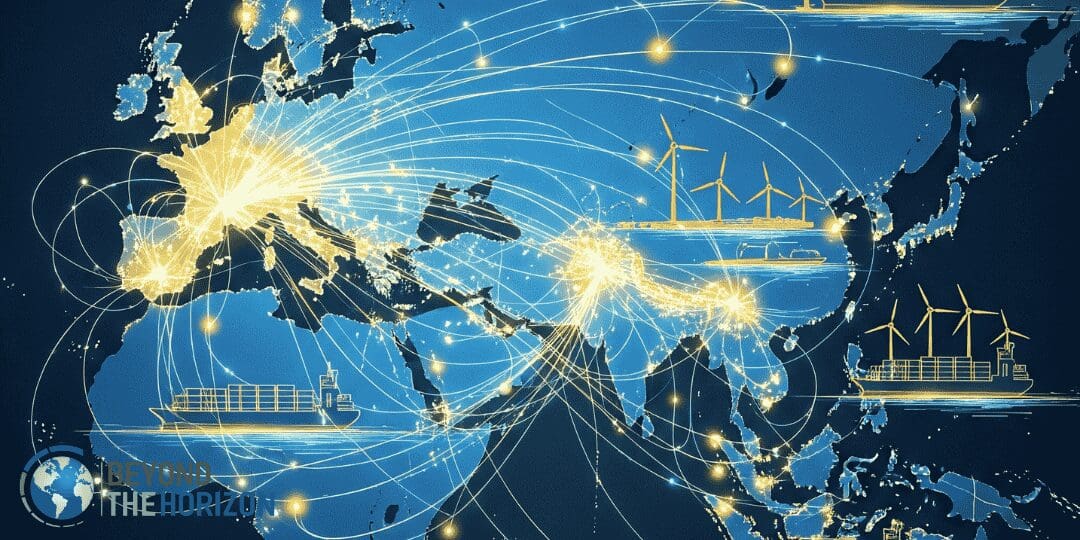The futures of the European Union and the Indo-Pacific are inextricably linked. The region's growing economic, demographic, and political weight makes it a key priority for EU strategic interests.
Latest: 4th Indo-Pacific Ministerial Forum
Brussels • November 20-21, 2025
Strategic Context
Europe is positioning itself as a reliable alternative partner amidst US-China rivalry. More than 70 delegations and 50 ministers from Asia, Africa, and the Pacific are gathering in Brussels.
⚠️ Notable Exclusions: Neither Beijing nor Washington are invited. This exclusion is intentional to ensure a space for "open and frank" dialogue specifically between the EU and its Indo-Pacific partners.
Theme: "Building together a resilient, prosperous and secure future"
Round Table Agenda
-
- 1 Security Priorities in the face of current geopolitical developments.
-
- 2 Shared Prosperity, economic security, and digital connectivity.
-
- 3 Sustainable Future and common endeavors for clean energy.
is produced by the Indo-Pacific region.
lives in the region.
passes through the South China Sea.
An Economic Powerhouse
2024 Trade in Goods
Total two-way trade reached €848 Billion.
This resulted in a €52.7 Billion deficit for the EU, down from a peak of €98.3 Billion in 2022.
10-Year Growth (2014-2024)
Over the past decade, EU trade with the region has expanded significantly, especially in imports.
Fostering Free Trade
The EU is actively strengthening its economic ties through Free Trade Agreements (FTAs) to ensure resilient and fair supply chains.
FTAs In Force
-
- ✓ South Korea
-
- ✓ Japan
-
- ✓ Singapore
-
- ✓ Vietnam
-
- ✓ New Zealand
Negotiations Ongoing
-
- ⟳ Indonesia
-
- ⟳ India
-
- ⟳ Thailand
-
- ⟳ Philippines
-
- ⟳ Malaysia
-
- ⟳ Australia
The 7 Pillars of EU Strategy
The EU's engagement is guided by seven key priority areas, forming a comprehensive framework for cooperation.
Prosperity
Sustainable and inclusive prosperity through resilient supply chains and FTAs.
Green Transition
Implementing the Paris Agreement and protecting biodiversity.
Ocean Governance
Compliance with UNCLOS and fighting illegal, unreported, and unregulated fishing.
Digital Governance
Setting standards for AI, 5G, and secure data flows.
Connectivity
Boosting transport, energy, and digital links via the Global Gateway.
Security & Defense
Enhancing maritime security, cybersecurity, and counter-terrorism.
Human Security
Strengthening health systems and pandemic preparedness.
Strategic Partnerships in Action
Beyond trade, the EU is building deep, thematic partnerships in key strategic sectors to tackle global challenges together.
🟢 Green Alliances
Cooperating on decarbonization, renewable energy, and sustainable finance.
Key Partners
-
- Japan: First-ever EU Green Alliance
-
- Vietnam: Just Energy Transition Partnership
-
- Indonesia: Just Energy Transition Partnership
-
- South Korea: Green Partnership
🔵 Digital Partnerships
Defining a human-centric digital future based on shared values and standards.
Key Partners
-
- Japan: Semiconductors, 6G
-
- South Korea: Semiconductors, HPC
-
- Singapore: Digital Trade, AI
-
- India: via Trade & Technology Council
🔗 Global Gateway
Investing in sustainable and secure infrastructure to connect regions.
Flagship Projects
-
- Undersea Cables: Extending optical fiber systems to the Indo-Pacific.
-
- ASEAN: "Green Team Europe" initiative to support the ASEAN Power Grid.
Enhancing Security & Stability
The EU is a reliable security provider, focusing on maritime safety and capacity building to uphold international law, particularly UNCLOS.
Naval & Maritime Presence
-
- EUNAVFOR Atalanta: Actively counters piracy in the Western Indian Ocean.
-
- Coordinated Maritime Presences (CMP): Coordinates EU naval assets in the North-Western Indian Ocean.
Capacity Building & Exercises
-
- CRIMARIO II: An EU project to improve maritime domain awareness and information sharing across the region.
-
- Joint Exercises: Regular naval exercises are held with partners like Japan, India, Djibouti, and South Korea.

